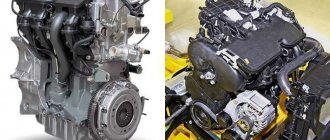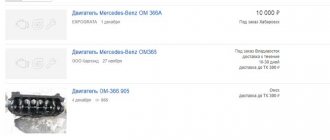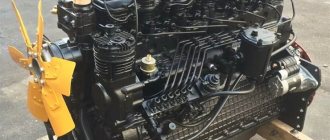Lada Granta
The updated Lada Granta appeared before domestic car enthusiasts on the catwalks of the Moscow International Motor Show, held in late summer and early autumn 2021. Technically, the new product is another planned restyling, however, thanks to the abundance of innovations, it can rightfully be considered the second generation. The most significant difference can be called the merger of the model line. From now on, hatchbacks and station wagons produced under the Kalina name will belong to Grant. In addition, the manufacturer slightly modernized the technical filling, used a redesigned interior from the second Viburnum and tried on a proprietary X-shaped design that echoes the flagship models. The elongated, narrower headlights with small sections of daytime running lights and large halogen lamp reflectors catch the eye. The lighting equipment is visually adjacent to the radiator grille. It is covered with several large ribs and smoothly flows into a narrow, elongated air intake on the front bumper. It is designed in a similar style, and on the sides of it you can see small sections of fog lights.
Dimensions
Lada Granta is a budget subcompact B class car. It is available in four different body styles: sedan, liftback, station wagon and hatchback. In the first version, its overall dimensions are: length 4268 mm, width 1700 mm, height 1500 mm, and wheelbase 2476 mm. Ground clearance for domestic models is traditionally high. In the standard position, about 190 millimeters remain under the bottom of the model. This landing, coupled with a long-travel, energy-intensive suspension, allows you to easily navigate roads with broken or uneven surfaces. The platform itself has not undergone any changes and has a classic layout for this class. On the front axle there is a structure with independent McPherson struts and a stabilizer bar, and at the rear there is an elastic semi-independent beam. The brakes are made in a budget style - ventilated disc mechanisms at the front and drums at the rear.
Specifications
The Grant will be equipped with three different engines, manual, automatic and robotic variable gearboxes, as well as exclusively front-wheel drive. Simplicity, availability, as well as a wide selection of alternative units make the model relatively universal. Moreover, the mechanics received a modernized main pair with a gear ratio of 3.9, and the robot boasts new firmware.
Under the hood of the basic versions of the Lada Granta there is a 1.6-liter inline four-cylinder eight-valve engine. Thanks to a lightweight piston group, it produces 87 horsepower and 140 Nm of torque. The engine is mated exclusively to mechanics, accelerates the car to hundreds in 11.9 seconds and is capable of reaching a maximum speed of 170 kilometers per hour. Fuel consumption will be 9.1 liters in the city, 5.3 on the highway and 6.8 in the combined cycle.
More expensive versions will receive a motor with a sixteen-valve block head. Depending on the version, it produces 98-106 horsepower and 145-148 Nm of torque. The power unit can work with mechanical, robotic and automatic transmissions. With such an engine, acceleration to hundreds will take 10.5-13.1 seconds, and the maximum speed will be 176-182 km/h. As for fuel consumption, the car will consume 8.7-9.9 liters in the city, 5.2-6.1 liters on the highway and 6.5-7.2 liters in the combined cycle.
Lada Granta Sedan, 1st generation (2011) - technical specifications
| Automobile | Lada Granta, 2018- | ||
| Modification name | 1.6 (87 hp) | 1.6 (98 hp) | 1.6 (106 hp) |
| Body type | four-door sedan | ||
| Number of places | 5 | ||
| Length, mm | 4268 | ||
| Width, mm | 1700 | ||
| Height, mm | 1500 | ||
| Wheelbase, mm | 2476 | ||
| Ground clearance (clearance), mm | 145-160 | ||
| Curb weight, kg | 1075 | ||
| engine's type | petrol, with distributed injection VAZ-11186 | petrol, with distributed injection VAZ-21126 | petrol, with distributed injection VAZ-21127 |
| Location | front, transverse | front, transverse | front, transverse |
| Number and arrangement of cylinders | 4, in a row | 4, in a row | 4, in a row |
| Working volume, cubic meters cm. | 1596 | 1596 | 1596 |
| Number of valves | 8 | 16 | 16 |
| Maximum power, l. With. (kW)/rpm | 87 (64) / 5100 | 98 (72) / 5600 | 106 (78) / 5800 |
| Maximum torque, Nm / rpm | 140 / 3800 | 145 / 4000 | 148 / 4200 |
| Transmission | mechanical, | automatic, | mechanical, (robotic, ) |
| Drive unit | front | ||
| Tires | 175/65 R14 | ||
| Maximum speed, km/h | 172 | 176 | 184 (184) |
| Acceleration time 0-100 km/h, s | 11,6 | 13,1 | 10,5 (12,0) |
| Fuel consumption in the combined cycle, l/100 km | 6,8 | 7,2 | 6,5 (6,5) |
| Fuel tank capacity, l | 50 | ||
| Fuel type | petrol | ||
| Note | * In brackets – data for cars with a robotic gearbox | ||
Lada Granta characteristics – Lada Granta technical characteristics
The characteristics of the Lada Grant are very similar to the characteristics of the Lada Kalina. This is no wonder Lada Granta was created on the basis of Kalina. Despite the fact that the characteristics of the dimensions of these cars are different, the distance from the front to rear wheels is exactly the same and amounts to 2476. That is, the Granta’s interior is the same in size as that of the Kalina . Although the interior decoration of Kalina and Granta is different. By the way, the characteristics of the Lada Grant in the hatchback body are already known. Let us remind you that this version of the domestic car will go on sale closer to the summer of 2014.
The increase in the size of the Granta was due to the increased size of the trunk; in addition, the designers increased the front part. The result is a rather cramped car, but with a fairly large trunk; you shouldn’t expect more from a 4-door budget sedan. The total length of the Lada Granta is 4260 millimeters .
Dimensions, dimensions and volumes of Lada Granta
- Length – 4,260 mm
- Width – 1,700 mm
- Height – 1,500 mm
- Base, distance between front and rear axle – 2,476 mm
- Front and rear wheel tracks – 1430 and 1414 mm, respectively
- Trunk volume – 520 liters
- Fuel tank size – 50 liters
The ground clearance of the Lada Granta with a manual transmission is 16 centimeters (160 mm), the ground clearance of the Lada Granta with an automatic transmission is 2 centimeters less and is 14 cm (140 millimeters). The manufacturer himself explains the lower ground clearance of a budget sedan with an automatic transmission by the fact that the weight of the engine in combination with the automatic transmission is greater.
The weight of the Lada Grant is 1,160 kilograms, with a full load of 1,560 kg. The manufacturer indicates that the car is capable of towing a trailer weighing 450 kilograms without its own braking system and 900 kg with a brake mechanism.
The characteristics of the Lada Granta transmission are as follows. The car has only front-wheel drive and two types of gearboxes: a manual 5-speed gearbox with a main gear ratio of 3.7. And an automatic transmission from the Japanese manufacturer Jatco with a gear ratio of 4.1. The 4-band automatic transmission of the Lada Granta makes the car much more comfortable, but you have to pay for everything, so fuel consumption with an automatic transmission is higher, and acceleration to the first hundred takes longer.
The characteristics of the Lada Granta engine are a very interesting topic for conversation. Let's say right away that Granta has a gasoline engine running on 95 gasoline and having one volume of 1.6 liters, or more precisely 1596 cubic centimeters. However, due to the fact that the design of this one engine is essentially different, the consumption, acceleration, and power indicators are completely different. Today, Grants are offered in 4 engine versions with 82, 87, 98 and 106 horsepower. Two engines have 8 valves, two more have a 16-valve mechanism. The four-stroke gasoline power unit has electronically controlled distributed injection with various settings. In general, the engine for Granta is of injection type. Modern injector, like on most foreign cars.
The weakest VAZ 1.6 engine with 8 valves with a power of 82 horses is installed on the Lada Granta in the minimum “standard” configuration; the characteristics of this engine are as follows -
- Power hp/kW – 82/60 at 5100 rpm
- Torque – 132 Nm at 3800 rpm
- Maximum speed – 165 kilometers per hour
- Acceleration to the first hundred – 12.6 seconds
- Fuel consumption in the combined cycle – 7.4 liters
Lada Granta with 8-valve engine
Eight-valve engines are considered basic and are presented in two units. Separately, it should be noted that if the timing belt breaks, the valves will not be bent only in one engine - 11183-50, which, by the way, is considered the weakest. Therefore, no matter what happens, the timing belt must be replaced in a timely manner.
This, as mentioned earlier, is the weakest engine of all that is presented in the Grant line. Its power is 82 horsepower. By the way, this engine is considered a more simplified version of what is installed on the VAZ-2111.
But there are also characteristics in which this engine differs from the original. Namely:
- improved environmental performance;
- increased reliability parameters;
- reduced "crankiness".
In addition, the above engine also has such features as high-torque power and elasticity, which is especially important when driving off-road.
The disadvantages of this type of engine are considered to be:
- the need to periodically adjust the valves;
- increased noise when the engine is running.
Benefits include:
- cast iron used as the basis of the cylinder block;
- maximum torque – 125 Nm, which is achieved already at 3 thousand revolutions;
- The compression ratio cannot be higher than 9.6.
- Engine 11186.
This motor is a slightly improved modification of the motor installed on the VAZ-21114.
Regardless of the fact that this engine has an undeniable advantage in the form of 87 horsepower, it also has a significant drawback. The fact is that, compared to the engine we discussed above, this one has a much shorter lifespan, and if the timing belt breaks, the car itself will need to be repaired, since the valves will be bent.
- increased compression ratio (10.5);
- torque - 140 Nm at 3.8 thousand revolutions;
- economical fuel consumption, both during urban driving and on the highway.
- Engine 21116.
This type of engine is completely identical to 11186. The only difference between them lies in the piston system, since it has a French-made piston installed on it.
8 valve engine
On the Lada Granta, the car owner will find engines with 8 valves and 16 valves. They differ from each other in technical characteristics and displacement. Car owners don't like early engines because they are noisy. Some engines with 16 valves often suffer from broken belts and bent valves, which negatively affects owner reviews. But in general, these engines are reliable and last up to 250 thousand kilometers without major repairs.
Let's see what engines were installed on the Lada Granta from 8 valves:
- VAZ 1183-50;
- VAZ 21116;
- VAZ 11183.
For your information! The latest engine of the VAZ 11183 is a primitive four-cylinder engine, which was inherited from its predecessors. The only advantage of the power unit was the reliable gas distribution system. When the belt broke, the valves did not bend.
Now let’s look at the technical characteristics of the first two engines, which represent improved versions of the primitive VAZ 11183 engine.
Engine Specifications
You will see the technical parameters of eight-valve engines in the table below.
| Characteristics 1183-50 | Meaning |
| Cylinders | 4 |
| Type | Row |
| Volume | 1.6 l |
| Valves | 8 |
| Compression | 10 |
| Power | 82 horses |
| Weight | 112 kg |
The fuel consumption of the Lada Granta engine in mixed mode is 7.4 liters. The engine torque is 132 Nm.
This is the simplest engine that is installed on Lada Granta cars: sedan or hatchback. The engine valves are not afraid of belt breakage. Unlike the primitive engine from which this power unit was created, the 1183-50 is distinguished by low-speed torque and environmental friendliness. The manufacturer assigns it the Euro 4 environmental class.
The negative aspects of the engine, according to reviews from car owners, include noise and constant adjustment of thermal valve clearances after a run of 15 thousand kilometers. If the thermostat breaks down, the engine stops heating to the required temperature.
Engine problems include burnt gaskets or valves. Because of this, the motor may operate unstably.
Similar article VAZ 11186 engine, technical characteristics and service life
Despite some disadvantages, for those car owners who want to have a small and unpretentious engine, which also consumes little, this 1183-50 is an ideal solution for installation in a Lada Granta car.
Now let's look at the technical characteristics of another eight-valve engine.
| Value 11186 | Parameter |
| Type | Row |
| Cylinders | 4 |
| Volume in liters | 1,6 |
| Cylinder diameter | 82 mm |
| Piston stroke | 75,6 |
| valves | 8 |
| Torque | 143 |
| Power | 87 hp |
| Fuel supply | Injection method |
| Fuel used | Gasoline AI 95 |
This engine is an improved power unit of the VAZ 21114 model. Among the advantages, one can observe a decrease in engine noise and fuel savings.
The downside is that the pistons are lighter. Because of this, there is no room for recesses in such pistons. Therefore, when the belt breaks, the valves bend.
Device
Both engines have a cast iron cylinder block. The BC head is made of aluminum alloy. What sets them apart from other engines is their unreliable electronics, which can freeze on a frosty day or rainy weather in the summer. And the use of low-quality fuel will certainly lead to burnout of the valves.
The engine design itself looks quite reliable. Eight-valve power units last a long time with annual maintenance and prevent belt breakage.
Engine life
Lada Granta engines run up to 250 thousand kilometers without major repairs. Engine maintenance consists of replacing filter elements every 15 thousand kilometers. The air filter can be changed after 27 thousand km.
Filling and updating of lubricant is done after a run of five or 10 thousand kilometers. Depends on the region where the machine is used. But the coolant can be replaced after 60 thousand kilometers.
Attention! It is not recommended to fill these engines with gasoline with an octane number of AI 92. Since the entire structure of the power unit is very sensitive to high-quality gasoline. This happens because the compression ratio is 10 units. This is the number at which gasoline with octane AI 92 begins to detonate. The latter action, if used continuously, will lead to the death of the motor.
Lada Granta with a 16-valve engine
Since progress does not stand still, 16-valve engines have become the basis of all modern cars in the Grant line.
But it should be immediately noted that the Lada Granta with a 16-valve engine quite often breaks the timing belt. In this regard, its timely replacement should be treated carefully. This motor was developed more than 10 years ago. It is considered to be a continuation of the line of engines installed on the VAZ-21124. In turn, experts consider this engine to be one of the highest quality and most reliable, across the entire range of domestic cars.
Engine power is 98 hp. s., and the maximum speed is 5.6 thousand per minute. But the torque is no longer so impressive - 145 Nm at a speed of 4 thousand. Separately, it should be noted that some owners of cars with this engine complain about difficulties starting it when the temperature outside is below zero.
It should also be noted that the compression ratio of the cylinder is 11. As a result, the above advantages led to the fact that this engine also had some disadvantages. So, for example, during city driving, fuel consumption immediately increases to 9.8 liters per hundred. And if the timing belt breaks, the valves will be bent.
16 valve engine
Now let's talk about 16-valve engines for cars of the domestic manufacturer Lada Granta. These engines are already installed on luxury cars. The power of the power units has been increased, which has affected the reduction in fuel economy.
Some models are used on Lada Granta "Sport" class cars. They are distinguished by high-torque power and rapid development of speed from the start.
Similar article Technical characteristics and operation of the 1UZ FE engine
Technical specifications for Lada Granta
Let's look at the technical characteristics of the 16-valve engine model 21126. They are presented in the table.
| Parameter | Meaning |
| Type | Row |
| Cylinders | 4 |
| valves | 16 |
| Compression | 11 |
| Volume | 1.6 l |
| Cylinder diameter | 82 |
| Piston stroke | 75 |
| Power | 106 hp |
| Petrol | AI 95 |
| Weight | 115 kg |
| Life resource | 250 thousand km |
What distinguishes this engine from the previous two is the presence of DAT and DTV instead of DRMV. In this way, the manufacturer got rid of floating speed at idle speed of the engine. This improved the performance of the power unit from the Lada Grant. It’s true that these engines have become a little more expensive.
A broken timing belt still bends the valve. But this is the price to pay for making the engine lighter and increasing its power.
Now let's look at another engine that was installed on the “Lux” model from Lada Grant. Technical characteristics of this engine 21127.
| Parameter | Meaning |
| Type | L |
| Cylinders | 4 |
| Piston diameter and stroke | Same as previous ones |
| Compression | 11 |
| timing belt | DOHC |
| Torque | 148 Nm |
| Nutrition | Injection |
| Econorms | Euro 4 |
| Weight | 116 kg |
| Life resource | 250 thousand km |
There is another rare engine with 16 valves. It was installed only on “Sport” model cars. The modification of the power unit is designated VAZ 2126-77. It was an upgraded model 2126 engine.
The only difference from other engines was the increase in power after the tachometer crossed the three thousand rpm mark. And its power was 120 horses. Otherwise, it did not differ from the previous engines already described.
Engine design features
The sixteen-valve engine has a cast-iron cylinder block and an aluminum head. Another advantage of these engines was the ability to cover 100 meters in 11 seconds.
The maximum speed that the engine reached was considered to be 172 km/h. This is why car owners fell in love with these engines. Although there were some shortcomings. For example, bending of valves when a belt breaks. This was followed by a major overhaul or a complete change of the power unit.
These engines showed high power, which differed several times from that indicated in the data sheet. However, they often had problems that were also different from the passport problems.
For example, the car owner’s reluctance to take the engine for regular maintenance led to a decrease in the engine’s lifespan. The gasket and pistons on these engines burned out.
The water pump broke down with enviable frequency. Especially residents of the southern regions and those who like to kill cars in difficult operating conditions cannot boast of the absence of overheating.
Similar article Technical characteristics of VAZ engine 21127
Motor life
The service life of sixteen-valve engines exceeds three hundred thousand kilometers if treated with care. The engine life is not lower than the eight-valve one, but does not exceed it, as can be seen from the tables above.
Despite such high engine durability, it has disadvantages that do not suit many car owners. Let's look at these disadvantages.
Technical characteristics of the new Lada Granta sedan (compared with the old one)
Sales of the updated Lada Granta family began on September 1, 2018. The main features of the new product are the modified exterior, which is made in the company’s signature X-style. Minor updates affected the interior and technical parts of the car. The table below presents the official technical characteristics of the new Lada Granta sedan.
| Engine, transmission | 1.6 l 8-cl. (87 hp), 5MT | 1.6 l 16-cl. (98 hp), 4AT | 1.6 l 16 cl. (106 hp), 5MT | 1.6 l 16 cl. (106 hp), 5AMT |
| Body | ||||
| Wheel formula / drive wheels | 4 x 2 / front | |||
| Engine location | anterior transverse | |||
| Body type / number of doors | sedan / 4 | |||
| Number of seats | 5 | |||
| Length / width / height, mm | 4268 / 1700 / 1500 | |||
| Base, mm | 2476 | |||
| Front/rear wheel track, mm | 1430 / 1414 | |||
| Ground clearance under the power unit (fully loaded), mm | 160 | 145 | 160 | 160 |
| Luggage compartment volume in passenger/cargo versions, l | 520 / 815 | |||
| Engine | ||||
| Engine code | 11186 | 21126 | 21127 | 21127 |
| engine's type | petrol | |||
| Supply system | electronically controlled fuel injection | |||
| Number, arrangement of cylinders | 4, in-line | |||
| Working volume, cubic meters cm | 1596 | |||
| Maximum power, kW (hp) / rev. min. | 64 (87) / 5100 | 72 (98) / 5600 | 78 (106) / 5800 | 78 (106) / 5800 |
| Maximum torque, Nm / rev. min. | 140 / 3800 | 145 / 4000 | 148 / 4200 | 148 / 4200 |
| Recommended fuel | gasoline 95 | |||
| Dynamic characteristics | ||||
| Maximum speed, km/h | 172 | 176 | 184 | 184 |
| Acceleration time 0-100 km/h, s | 11,6 | 13,1 | 10,5 | 12,0 |
| Fuel consumption | ||||
| Urban cycle, l/100 km | 9,1 | 9,9 | 8,7 | 8,7 |
| Extra-urban cycle, l/100 km | 5,3 | 6,1 | 5,2 | 5,2 |
| Combined cycle, l/100 km | 6,8 | 7,2 | 6,5 | 6,5 |
| Weight | ||||
| Curb weight, kg | 1075. 1160 | |||
| Technically permissible maximum weight, kg | 1560 | |||
| Maximum trailer weight without brake system / with brake system, kg | 450 / 900 | |||
| Fuel tank volume, l | 50 | |||
| Transmission | ||||
| Transmission type | 5MT | 4AT | 5MT | 5AMT |
| Final drive ratio | 3,9 | 4,1 | 3,9 | 3,9 |
| Suspension | ||||
| Front | independent, MacPherson type, spring, with gas-filled telescopic shock absorbers, with anti-roll bar | |||
| Rear | semi-independent, lever, spring, with gas-filled telescopic shock absorbers | |||
| Steering | ||||
| Steering gear | rack and pinion | |||
| Tires | ||||
| Dimension | 175/65 R14 (82, H); 185/60 R14 (82, N); 185/55 R15 (82, H/V) | |||
The Lada.online website found out how the technical characteristics of the new Granta differ from the old one (Granta pre-restayl):
- The body length of the new Granta is 8 mm longer.
- The maximum speed of the new Granta has increased by 1-5 km/h (depending on the type of power unit).
- The acceleration time from 0-100 km/h of the new Granta has been reduced to 0.6 seconds (depending on the type of power unit).
- The fuel consumption of the new Granta has been reduced to 0.5 l/100 km (depending on the type of power unit).
- The final drive ratio of the manual transmission and AMT has changed from 3.7 to 3.9.
- The front and rear suspension of the new Granta no longer uses hydraulic telescopic shock absorbers.
- The new Granta is no longer equipped with 175/70 R13 tires.
Let us remind you that we wrote earlier about the main distinctive features of the new Granta.
Ground clearance Lada Granta liftback
The ground clearance of the Lada Granta liftback is slightly different from the sedan:
- Ground clearance at full load under the engine crankcase, no less than, mm – 160 , for “lux” with VAZ-21126 and automatic transmission – 135
- Ground clearance at full load under the gearbox housing is not less than, mm - 167 (“Standard” and “luxury” with VAZ-11186 engine), 180 (“norm” and “luxury” with VAZ-21127), 160 (“norm” with VAZ-21116), 169 (“norm” and “luxury” with VAZ-21126)










